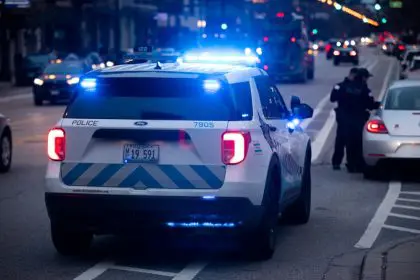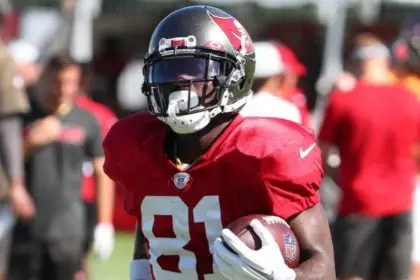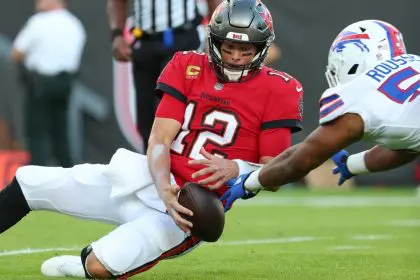
Chicago and the crime that it is plagued with is a constant subject in the national media. Most recently the Washington Post reported that Chicago had one of its worst days in more than a decade when it comes to homicides. These reports and headlines are stark and riveting but do not provide a true picture of what is happening. They do not speak to the lives affected in the wake of all this death and violence.
Rolling out spoke with school psychologist Glenda Smith, Ph.D., who works directly with young people who have been touched by violence. We discussed the effects of this violence on youngsters, why gangs are so prevalent in inner cities and many other issues that help to create such an adverse situation in Black communities. Her professional perspective is invaluable and provides insight into the root cause of these situations.
Tell us who you are and what you do.
My name is Glenda Smith. I have been a school psychologist for the past 19 years.
How has death affected the student body?
Death has affected the student body immensely. Some children are incredibly resilient. I think that may be more akin to their personality and how they process stressful events such as death. There are others that have a long struggle making sense of the absence of their loved one(s). When you take these stressful events and bring them into the classroom for at a minimum of seven hours of instruction, the impact is significant. From personal observation, some of these student are physically, mentally and emotionally numb. The depth and length of this feeling is different for everyone.
We have dynamic teachers that stand before the students prepared to teach a lesson that they have prepared and researched to address the curriculum content. For the “emotionally injured” student, it is often like sending an important email that gets trapped in your spam box or the server was not properly working and unable to deliver the information. It is lost completely or unable to be accessed. Traumatic events such as death is emotionally scaring and leaves a mental mark — often not visible — that takes a process to heal. Untreated it may create heightened arousal and reactivity. An inability to self-regulate behavior, concentrate and focus to process mental information, etc.
When speaking with students, what seems to be the common thread that generates so much despair?
It is what has been mentioned by many people prior. Systematically, it is a lack of closure to who or what caused the death of a loved one. For example, street violence where the murders go unsolved for years. The lack of justice for the loss of their loved one surely does not lessen the level of despair. Closure is a significant part of the healing process.
Why do you think the need to be part of a gang is still so important in the black community?
Belonging is natural. We all seek to belong to something, someone, even some organization. When you have single parent homes were the adult spends more time out of the home trying to make a living for their children, time is often very limited for engagement. This is a prime opportunity for the young child looking to make connections with peers to form a bond. Unfortunately that bond may be though negative gang affiliations. Sometimes it is involvement by default (family involvement), following in someone’s steps a pattern or expectation.
We have to get our young children to understand that belonging to a “gang” (for reference- Webster’s 3rd point for the meaning of the word gang- A group of people who are friends and who do things together) is natural, however the “gang” we select should work in the betterment of ourselves, our community, our city, our state and our nation. The “gang” should work to enhance you and others, to uplift and to promote our best qualities.
Talk about how children are affected into their adulthood by their experiences?
Emotional trauma such as the violence and the experience of violence through death can heal overtime. The time frame is different for each person. Some students are able to take what occurs around them and plan an alternative path. They are able to use the tragedies as coal to fuel their internal flame. It takes resources such as community programs, mentoring programs, and or that one teacher that is able to see beyond that student’s circumstances when the student can’t. More importantly, it takes getting involved in therapy to help develop coping skills, help to set goals, and teach different ways of thinking or restructuring the thought process.
What value do you bring to the community?
The value I add to the community is through the school-age children that I work with on a daily basis. I am available to offer an outlet for them to release pass hurts and work towards developing better coping skills in the midst of their trauma. Services are also available to the parents. Oftentimes, they just need to have a listening ear someone to vent to and express their emotions. Someone to help them consider options they could not think of. I provide referrals and references for community services that parents can access. Often times, I am able to help coordinate the services with the parent to community resources when they are unable to do so for themselves.
How do gangs prey on the minds of young students?
Gangs make themselves enticing to young students by perpetrating what looks good in young minds, ex. money, street credibility, fear from others, power, young ladies that like those type of young men. The outward appeal is very alluring. They can sell this image well. Gangs also look for the youngster that is left without direction, support, love, a sense of belonging from their family, and the one that is rebelling and reacting to past unaddressed trauma(s). This becomes the perfect lure from the gang to create a “family like or brotherhood” structure.
How does immaturity play a role in the disconnect in death being final?
Emotionally, young children under the age of 5 have a difficult time understanding death. They are very ego involved and often have a hard time making connections that the person will no longer be there. This does not mean that they will not be impacted by the sudden loss of a loved one from violence. This is still a traumatic event that will or may have an emotional influence on them at some point. Emotional immaturity can impact a child’s ability to process cognitive information (school work) and process emotional responses in social settings.
How do anger and insecurity affect students who attempt to process conflicts?
Anger and insecurity are the bricks on the wall that do not allow communication, understanding and healing to take place. It must be toned down so that we are able to process cognitive information and regulate behavioral responses. Anger and insecurity prevent a young student from being able to reason and make rational behavioral responses.
What are the top three destructive emotions that young men are dealing with during a violent moment?
When faced with a violent moment, young men I believe are dealing with a range of emotions. I am not sure of the top three, however surely anger and rage in my opinion would be at or near the top. One of the greatest impacts we can have is to help young victims of violence process their pain. Violence is a traumatic event that can leave a mental flesh wound so deep it could take an extended period to heal and quite frankly may never resume its natural state. Unaddressed, these young people become the “walking wounded.” We all know that a wound that has not healed properly will leave a scar that will never match the original state.
















